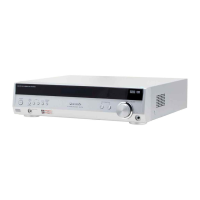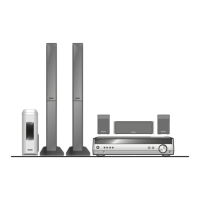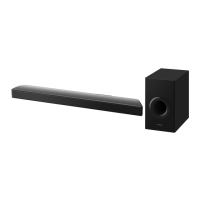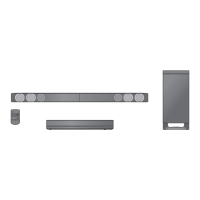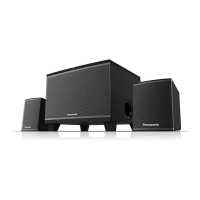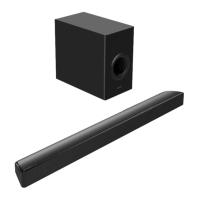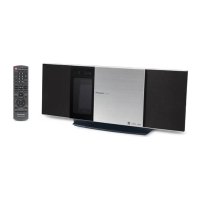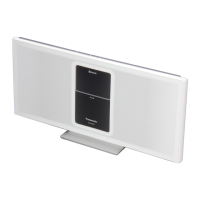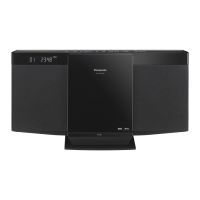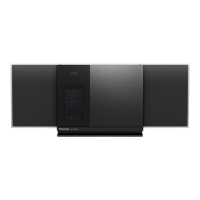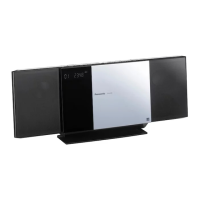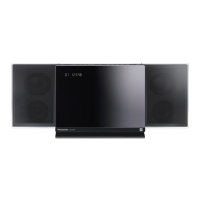RQT5822
48
º If the disc is brought from a cold to a warm
environment, moisture may form on the disc
Wipe with a soft, dry, lint-free cloth before using the disc.
º Handling precautions
³Do not write on the label side with a ball-point pen or other writing
instrument.
³Do not use record cleaning sprays, benzine, thinner, static electricity
prevention liquids or any other solvent.
³Do not attach labels or stickers to discs. (Do not use discs with ex-
posed adhesive from tape or left over peeled-off stickers.)
³Do not use scratch-proof protectors or covers.
³Do not use CDs printed with label printers available on the market.
º Do not place or store discs in the following
places
³Locations exposed to direct sunlight.
³Humid or dusty locations.
³Locations directly exposed to a heat vent or heating appliance.
Do not use irregulaly shaped discs, such as heart-shaped.
(These can damage the unit.)
Disc handling
º How to hold a disc
Do not touch the recorded surface.
º If the surface is dirty
Wipe it with a damp cloth and then wipe dry.
I/P/B
MPEG 2, the video compression standard adopted for use with
DVD-Video, codes frames using these 3 picture types.
I: Intra coded picture (I-picture)
This is the standard picture and is a complete picture in itself.
This means it has the best picture quality and is the best to use
when adjusting the picture.
P: Predictive coded picture (P-picture)
This picture is calculated based on past I or P-pictures.
B: Bidirectionally-predictive coded picture (B-picture)
This picture is calculated by comparing past and future I and
P-pictures so it has the lowest volume of information.
Linear PCM (pulse code modulation)
This is an uncompressed form of digital audio signal. While CDs are
recorded with a sampling rate of 44.1 kHz and a bit rate of 16 bits, the
audio on many DVDs is recorded with sampling rates of 48 kHz or
96 kHz and bit rates of 16 and 24 bits.
Playback control
If a Video CD has “playback control” written on it or its jacket, it means
that particular scenes or information can be selected for viewing inter-
actively with the television using the menu screen. This unit can play
Video CDs with playback control.
Using menus to control play of a Video CD is called “menu play” in
these operating instructions.
Title/Chapter
DVDs are divided up into large sections, titles, and smaller sections,
chapters. The numbers allocated to these sections are called title
numbers and chapter numbers.
Track
Video CDs and CDs are divided up into sections called tracks, and the
numbers allocated to these sections are called track numbers.
Bitstream
This is the digital form of multiple channel audio data (e.g., 5.1 chan-
nel) before it is decoded into its various channels.
Channels
This term describes the division of audio signals. For example, many
DVDs are recorded with 5.1-channel systems, made up of 2 front
channels (left and right), two surround channels (left and right), one
center channel (mainly used for dialogue), and one subwoofer channel
(for bass effects, the 0.1 channel).
DSP (Digital Signal Processor)
This is the name given to any circuit that processes sound and creates
sound fields. The circuits for Dolby Digital, Dolby Pro Logic, and DTS
are included in this term.
Dynamic range
Dynamic range is the difference between the lowest level of sound that
can be heard above the noise of the equipment and the highest level of
sound before distortion occurs.
Frame still and field still
A still is shown when you pause a moving picture. A frame still is made
up of two alternating fields, so the picture may appear blurred, but
overall quality is high.
A field still is not blurred, but it has only half the information of a frame
still so picture quality is lower.
Frames are the still pictures that go together to make a moving
picture. There are about 30 frames shown each second.
One frame is made up of two fields. A regular television shows these
fields one after the other to create frames.
Glossary

